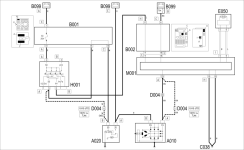I'll see what I can get done in a few days and it's cearly not as straight forward as I thought. I'm hoping it's the alternator but it may not be that simple. I have tried searching the subject but there is not much out there. Strange knowing the amount of Fiat's on the road through Europe. But I did find some info on a German forum regarding troubles after installing a non-OEM alternator - and in this case a Hella.
Google translated :
"After a long back and forth with the workshop that installed this Hella alternator at that time, I had the Hella removed again at the workshop and had an original Bosch reinstalled. And that was the cause of the peculiar error. According to workshop the Fiat definitely does not provide the required excitation current (and/or voltage) for the Hella. If you start the car it is not excited correctly, but gets excited even during the first few seconds. The residual polarity of the magnets is then sufficient to switch off the battery warning light during a direct restart, i.e. to indicate a correct excitation. The servo does not work, because without correct excitation of the Lima, the control unit switches off the largest consumers, and this probably includes the servo"


